Unpacking the magic of mushrooms and future of fungi
Curated by London editor Francesca Gavin, Mushrooms: The Art, Design and Future of Fungi is a new exhibition at Somerset House London featuring mycelium-inspired fonts, chairs and more
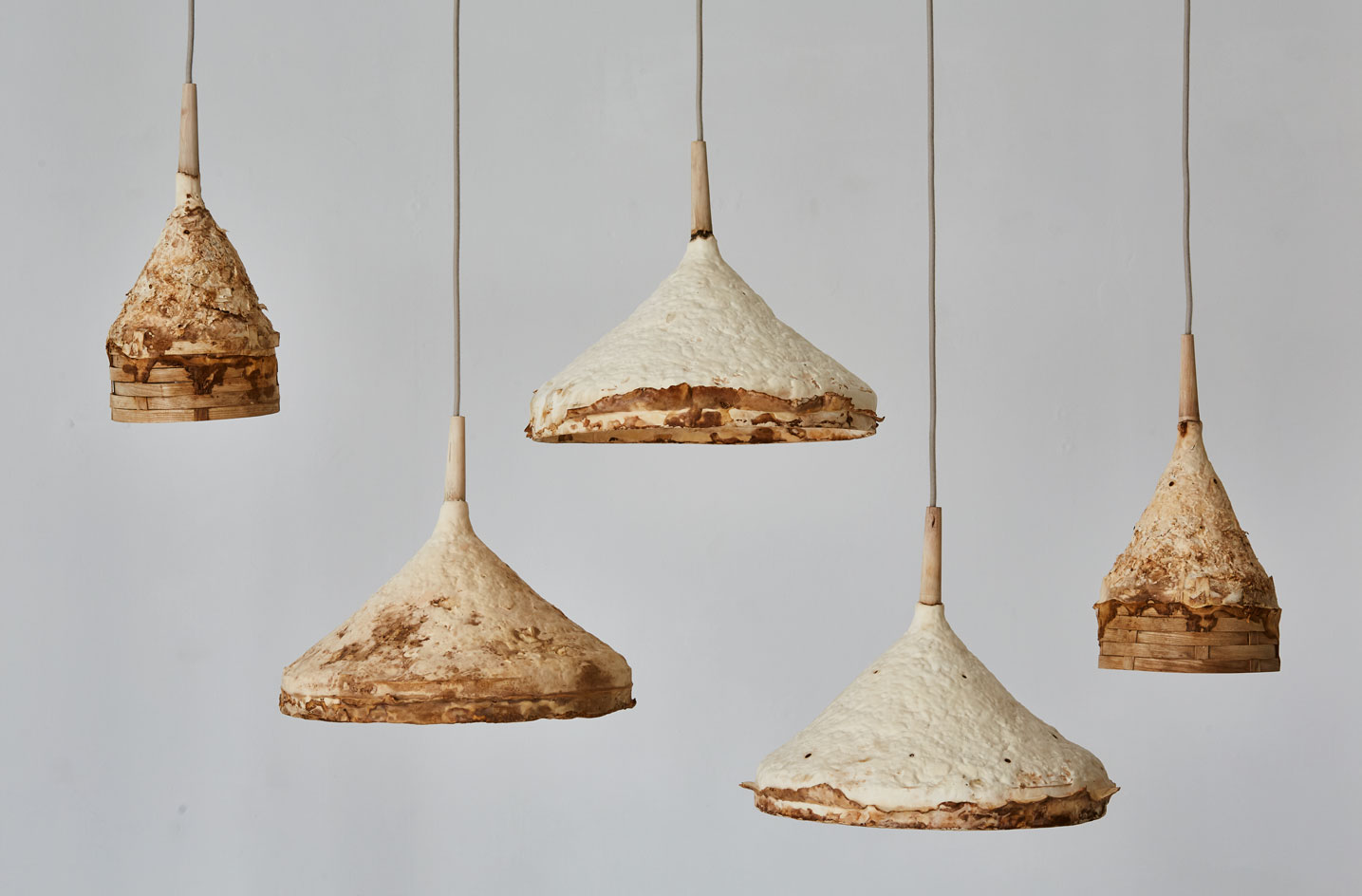
The humble toadstool has long been a source of inspiration for artists around the world. Its fleshy, bulbous form has inspired everyone from Beatrix Potter to Cy Twombly – even we explored its sartorial side in our December 2019 issue, but as a new show at Somerset House reveals, there’s much more to the mushroom than meets the eye.
Curated by London editor Francesca Gavin, Mushrooms: The Art, Design and Future of Fungi, is the result of Gavin’s own observations. ‘I kept noticing artists working with mushrooms,' recalls Gavin. ‘I read Anna L Tsing's The Mushroom at the End of the World quite soon after its first release and fell into a wormhole of mushroom facts. At this moment of climate crisis, treating something like mushrooms with respect and fascination feels more pressing than ever.'
Perhaps unsurprisingly, the show’s scope is broad, because as well as botany and art, mushrooms have more recently emerged in the fields of technology, architecture, science and even fashion. Visitors to Somerset House will encounter floral displays featuring mushrooms grown in venue’s former coalholes; artworks that span illustration, collage, sculpture, photography and film; thought-provoking furniture, and futuristic building materials all made from mycelium.
‘I like doing exhibitions that appeal to people beyond the art world, and mushrooms connect to people in such an accessible way,' says Gavin. ‘Without mushrooms ecosystems would fail. They are part of our own human microbiome.'
If people leave [the exhibition] learning a little bit about how much we need mushrooms, and by extension nature, to survive, then I'll be very happy.
The work of 35 artists, designers and musicians is split into three themes arranged across the venue’s three Terrace Rooms as part of a series of free public exhibitions sponsored by Charles Russell Speechlys. The themes Mycophilia, Magic Mushrooms and Fungi Futures were chosen by Gavin in what she describes as an attempt to ‘make sense of the mushroom'.
The exhibition’s first room houses Mycophilia, where the revival of interest in the mushroom is examined. With vitrines devoted to Alice in Wonderland and mushroom publications it shows how artists, both past and present, are working with mushrooms as a subject. The second room, Magic Mushrooms, shifts focus from the scientific to the psychedelic with John Cage and Lois Long's The Mushroom Book, a rare drawing by Takashi Murakami, and an enveloping surround-3D film by Adham Faramawy.
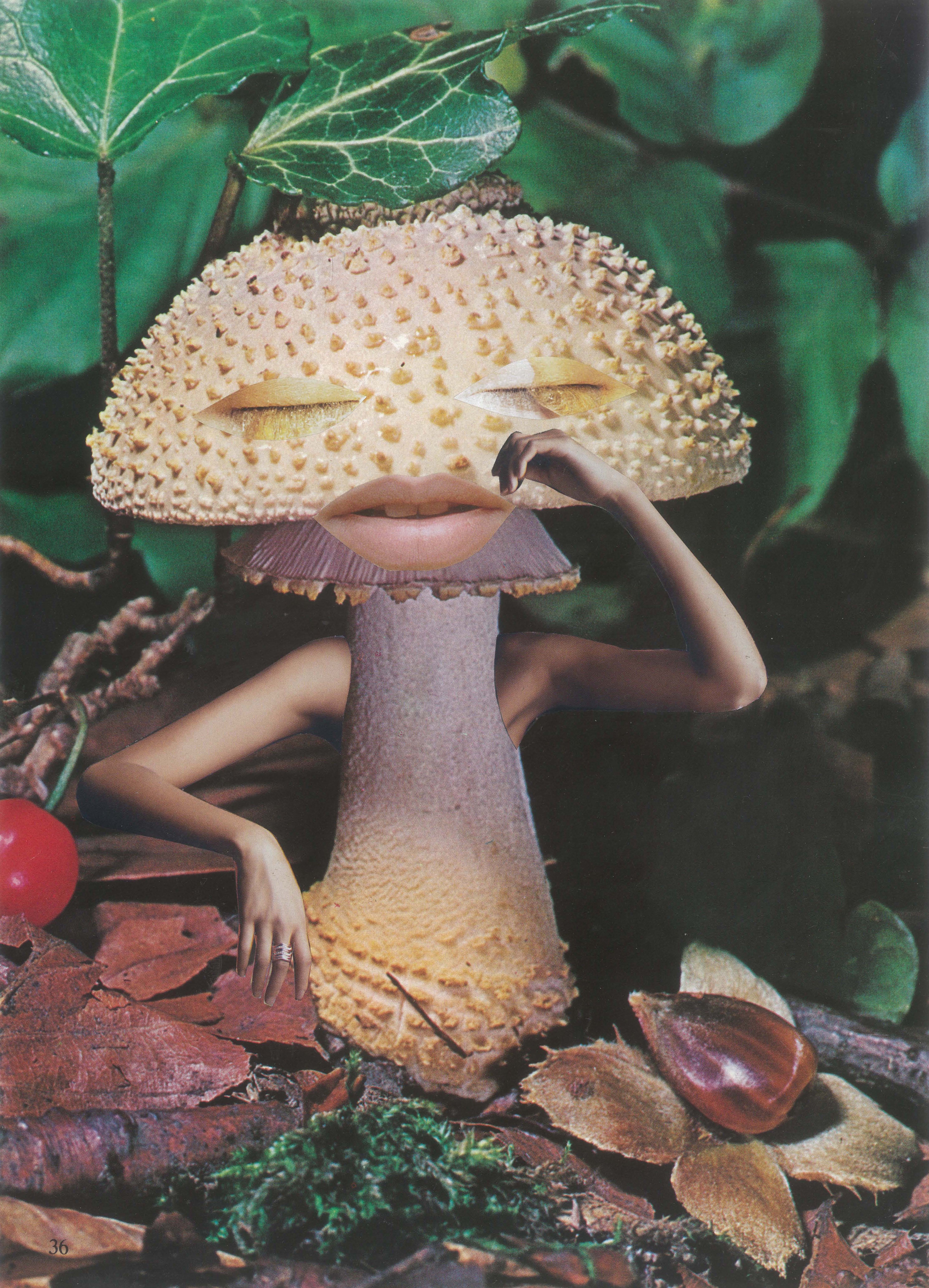
Mindful Mushroom, by Seana Gavin.
The third and final room houses Fungi Futures, which is devoted to design and innovation. Here we see how mushrooms are now being used as a material to create everything from lampshades by British designer Sebastian Cox and researcher Ninela Ivanova, a decomposable mushroom burial suit by Jae Rhim Lee to sculptural bricks developed by building material technologist Mae-Ling Lokko. A highlight is a specially-commissioned prototype chair by Tom Dixon, which was grown, ‘just in time' Gavin informs, from mycelium.
‘The aim of all three rooms is to highlight how we need to live symbiotically with nature,' says Gavin. ‘Artists and designers are always the first people to show some of the vital themes in contemporary life.’
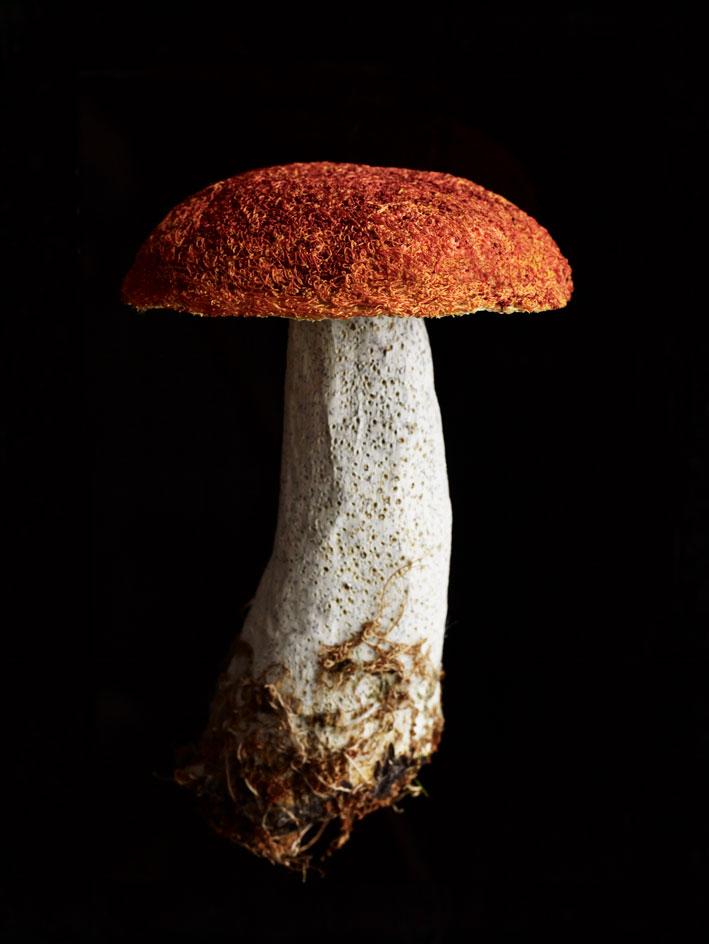
Fungi, by Amanda Cobbett. © Andrew Montgomery
‘Mycelium is being used for many things hard to illustrate in the show such as eating plastic, healing water and land from toxic waste,' she added. ‘I think those are the areas where fungi are becoming fundamental for our future existence.’
The show’s design, put together by Pentagram, plays on the Victorian’s scientific approach to museum display and classification. Rooms are organised by vinyl lines and facts about fungi are inserted into each thematic space. Pentagram has also worked with 3D artist Rosie Emery and creative studio Counterpoint to develop a mycelium-inspired font that is created using growth algorithms. Formed organically like fungi, the spore-like font has been used to create 3D-printed signage for each room as well as sculptures that appear to sprout out of the exhibition's walls and vitrines.
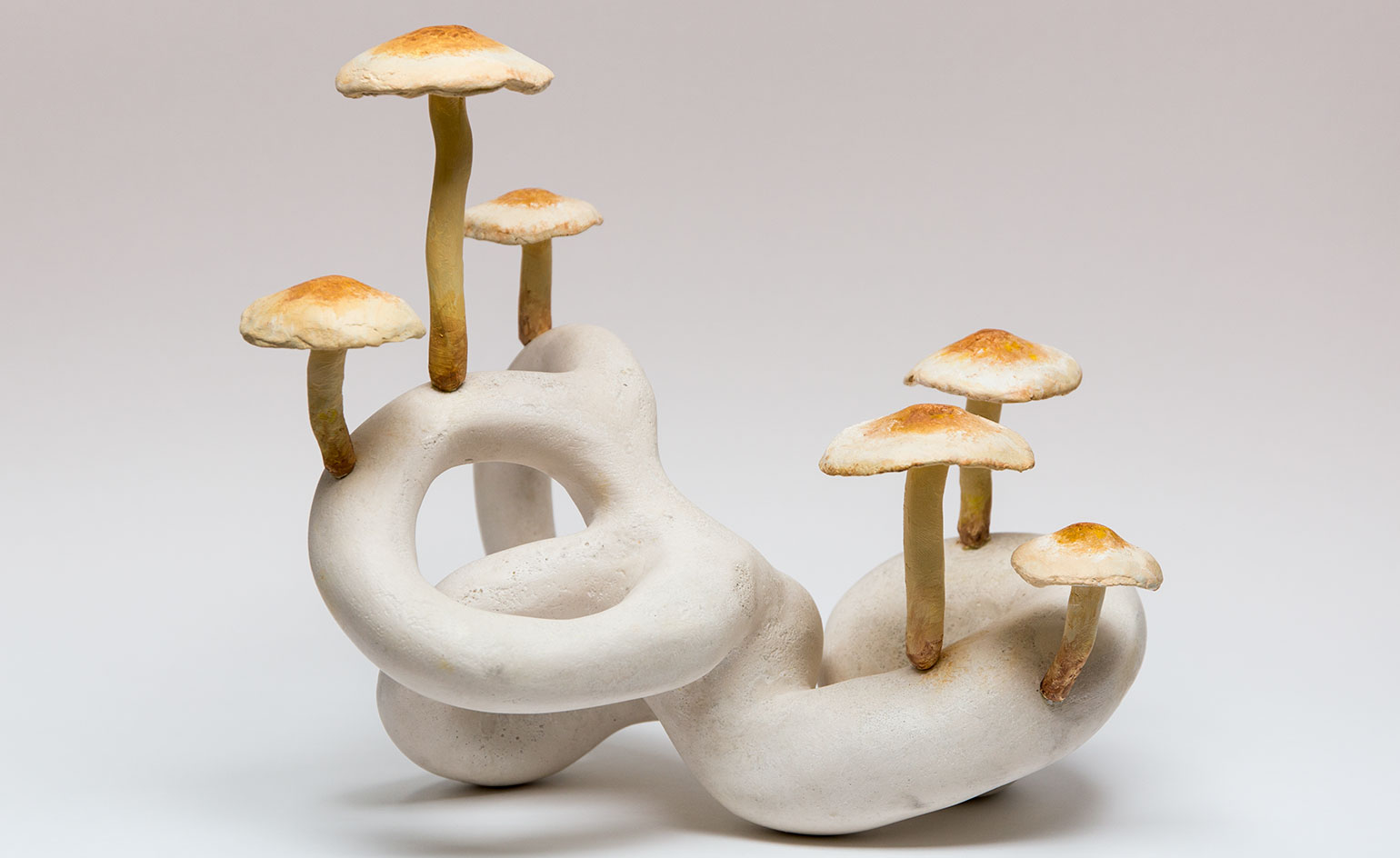
Cochlea Brick Tuft, by Hamish Pearch.
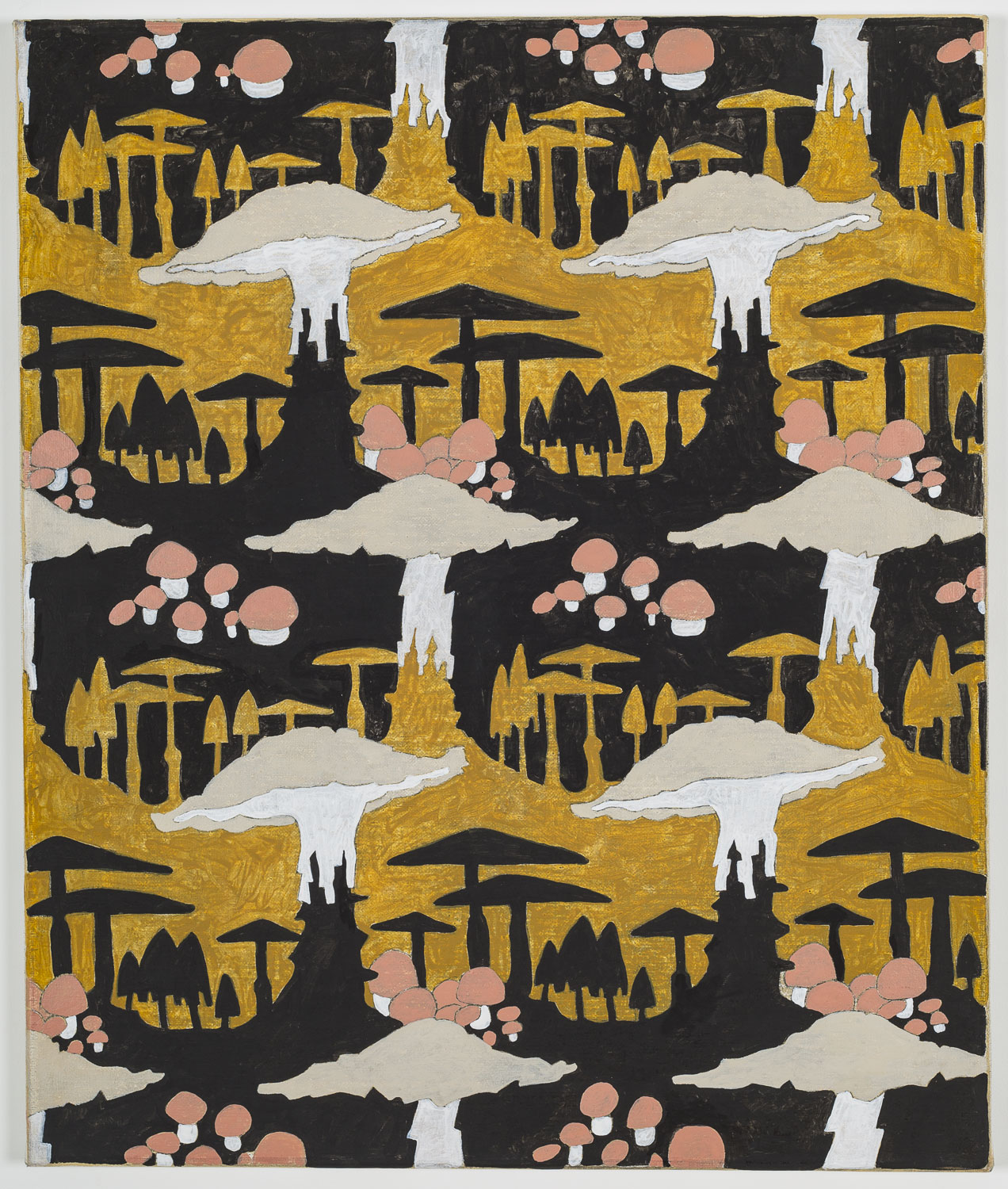
Mushroom Motif (Black and Ochre), 2017, by Alex Morrison.
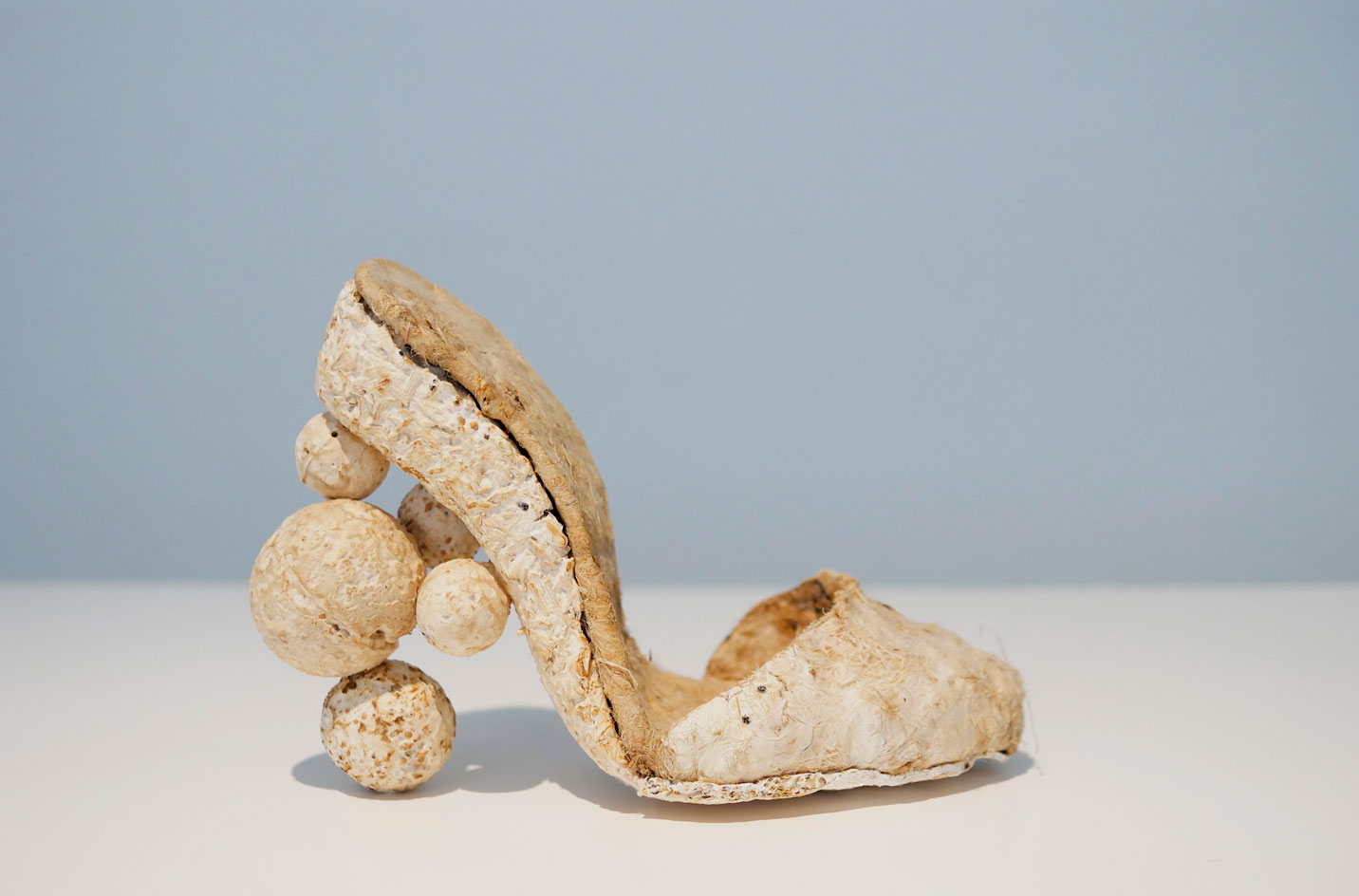
Mycoschoen, by Kristel Peters. Courtesy of the artist
INFORMATION
Mushrooms: The Art, Design and Future of Fungi, Somerset House, until 26 April
Receive our daily digest of inspiration, escapism and design stories from around the world direct to your inbox.
ADDRESS
Somerset House,
Strand, London
WC2R 1LA
Ali Morris is a UK-based editor, writer and creative consultant specialising in design, interiors and architecture. In her 16 years as a design writer, Ali has travelled the world, crafting articles about creative projects, products, places and people for titles such as Dezeen, Wallpaper* and Kinfolk.
-
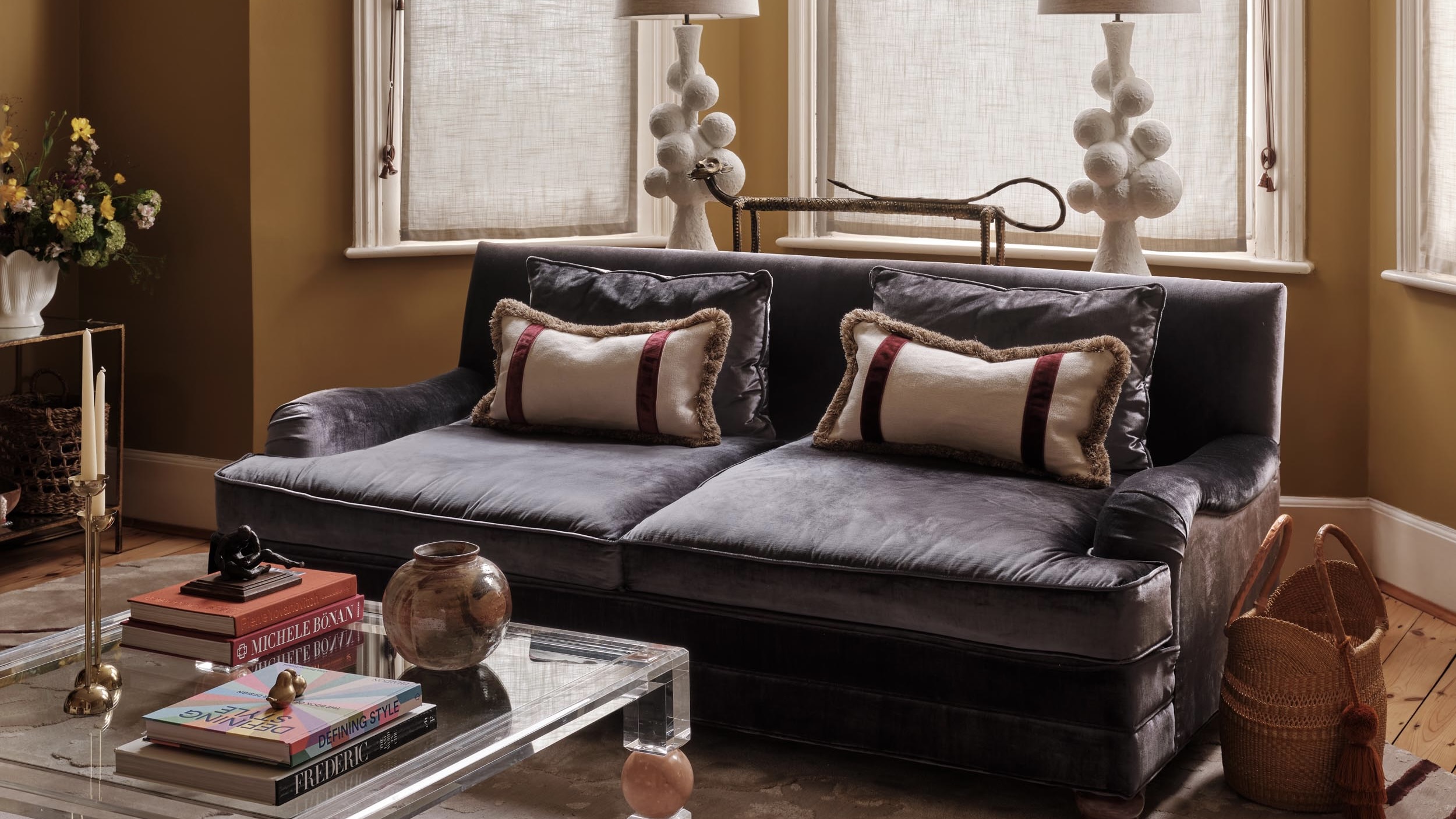 How to elevate a rental with minimal interventions? Charu Gandhi has nailed it with her London home
How to elevate a rental with minimal interventions? Charu Gandhi has nailed it with her London homeFocus on key spaces, work with inherited details, and go big on colour and texture, says Gandhi, an interior designer set on beautifying her tired rental
-
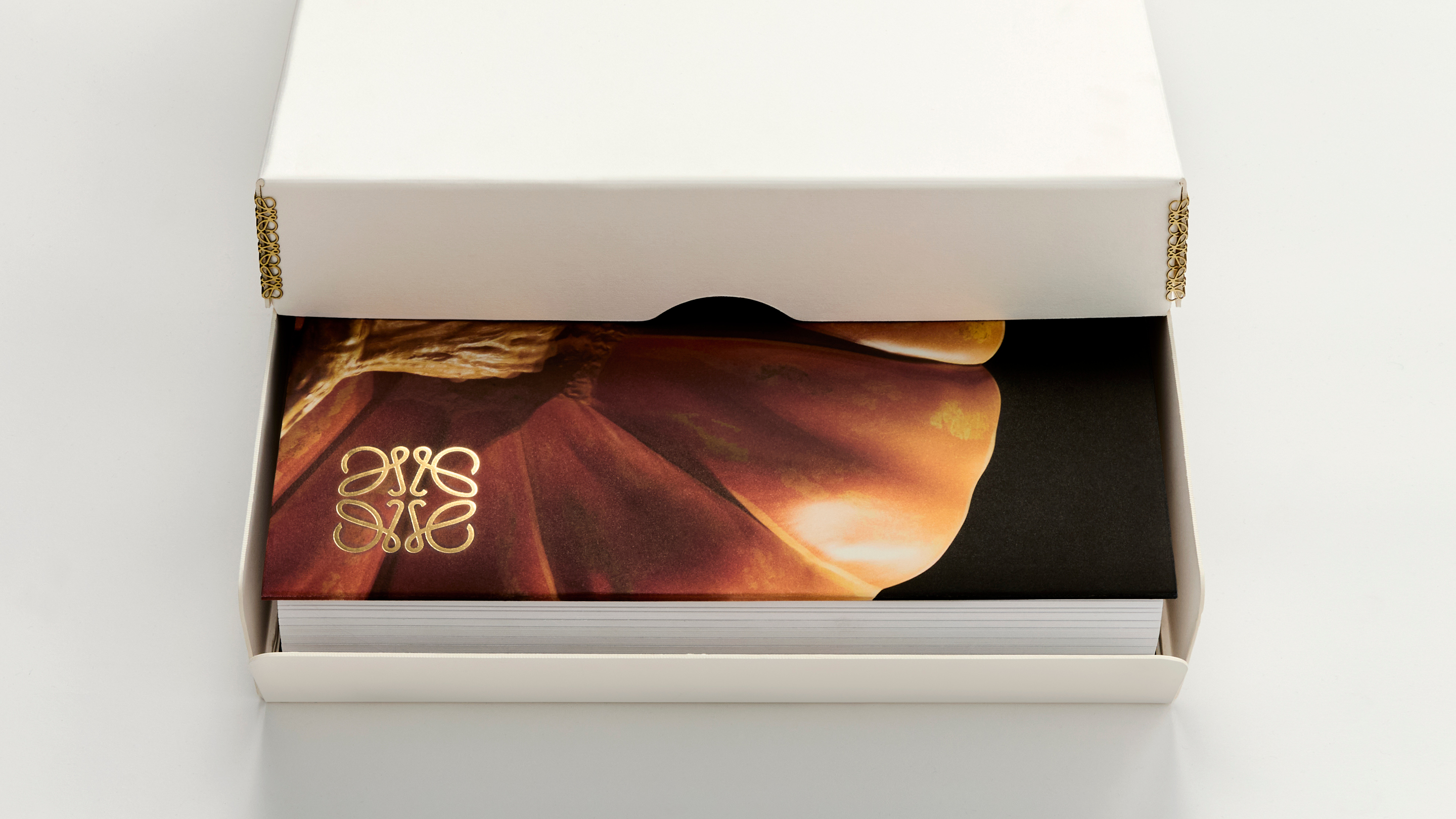 These fashion books, all released in 2025, are the perfect gift for style fans
These fashion books, all released in 2025, are the perfect gift for style fansChosen by the Wallpaper* style editors to inspire, intrigue and delight, these visually enticing tomes for your fashion library span from lush surveys on Loewe and Louis Vuitton to the rebellious style of Rick Owens and Jean Paul Gaultier
-
 Out of office: The Wallpaper* editors’ picks of the week
Out of office: The Wallpaper* editors’ picks of the weekFar from slowing down for the festive season, the Wallpaper* team is in full swing, hopping from events to openings this week. Sometimes work can feel like play – and we also had time for some festive cocktails and cinematic releases
-
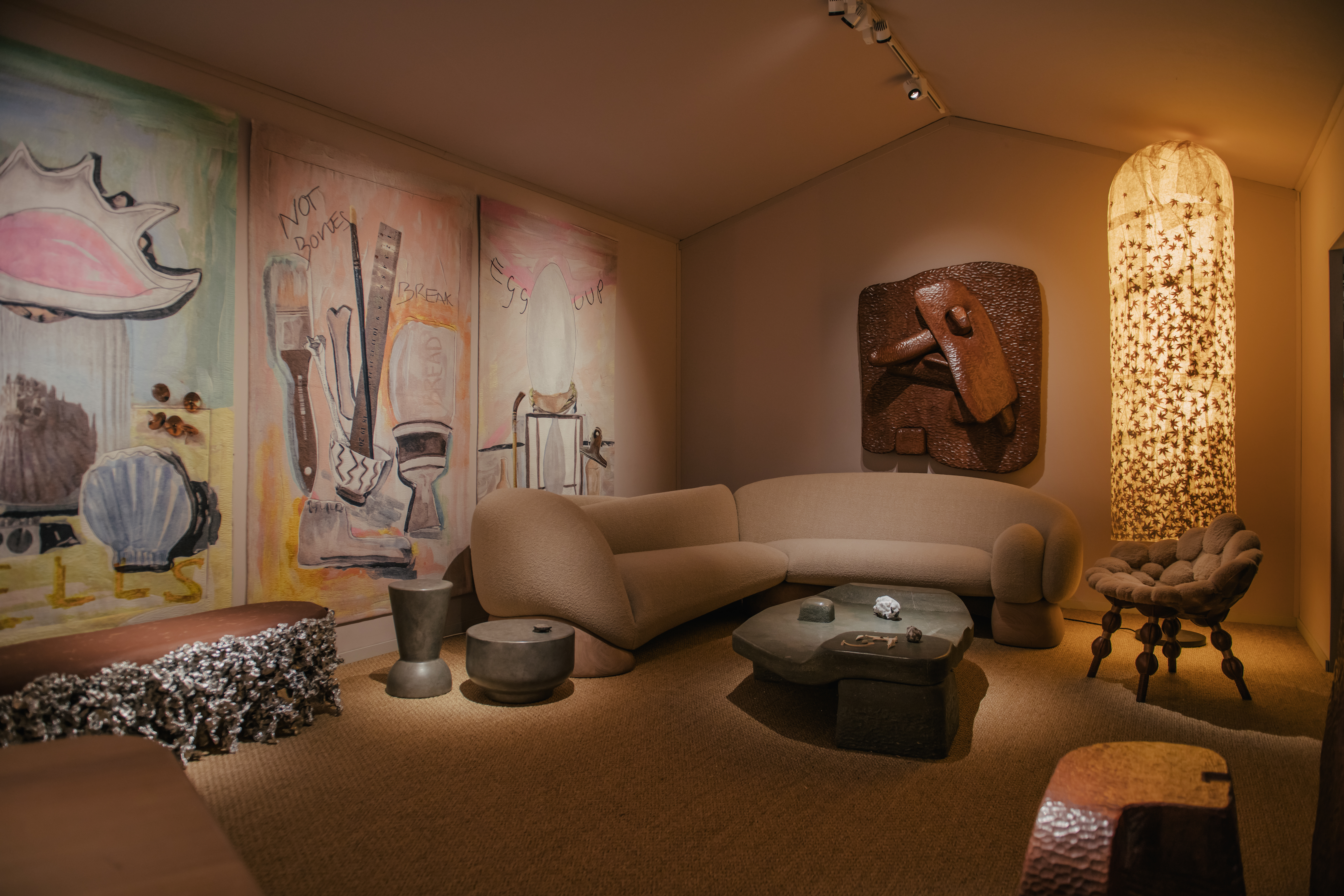 Step inside Faye Toogood's intimate cabinet of curiosities at PAD London
Step inside Faye Toogood's intimate cabinet of curiosities at PAD LondonFor PAD London 2025, (until 19 October) Faye Toogood presents The Magpie’s Nest with Friedman Benda
-
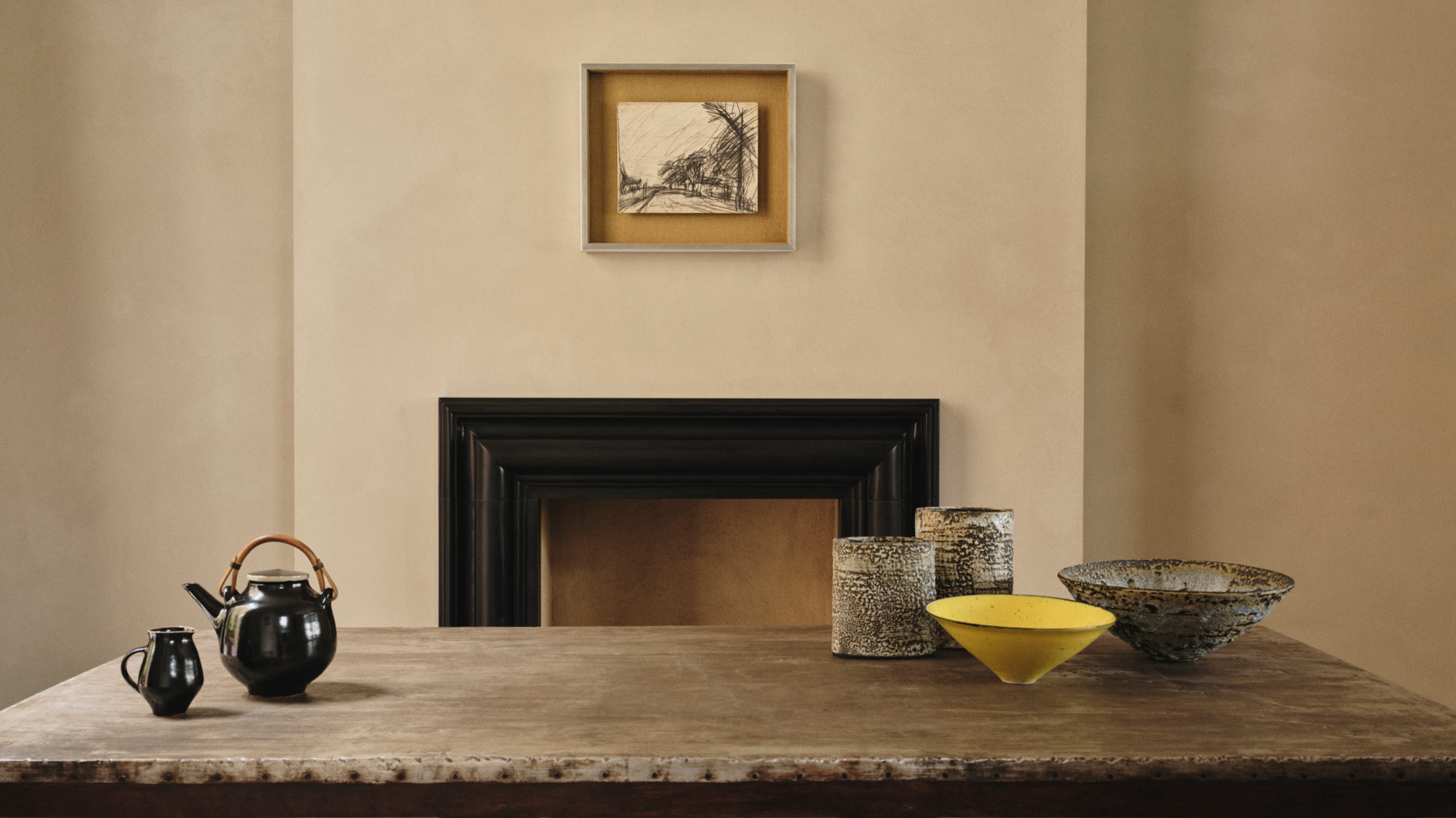 Rajan Bijlani opens his Primrose Hill home for ‘Electric Kiln’
Rajan Bijlani opens his Primrose Hill home for ‘Electric Kiln’In his London home – once the studio of ceramicist Emmanuel Cooper – Rajan Bijlani stages ‘Electric Kiln’, uniting Frank Auerbach, Lucie Rie and Cooper in an intimate reflection on the creative spirit of postwar London
-
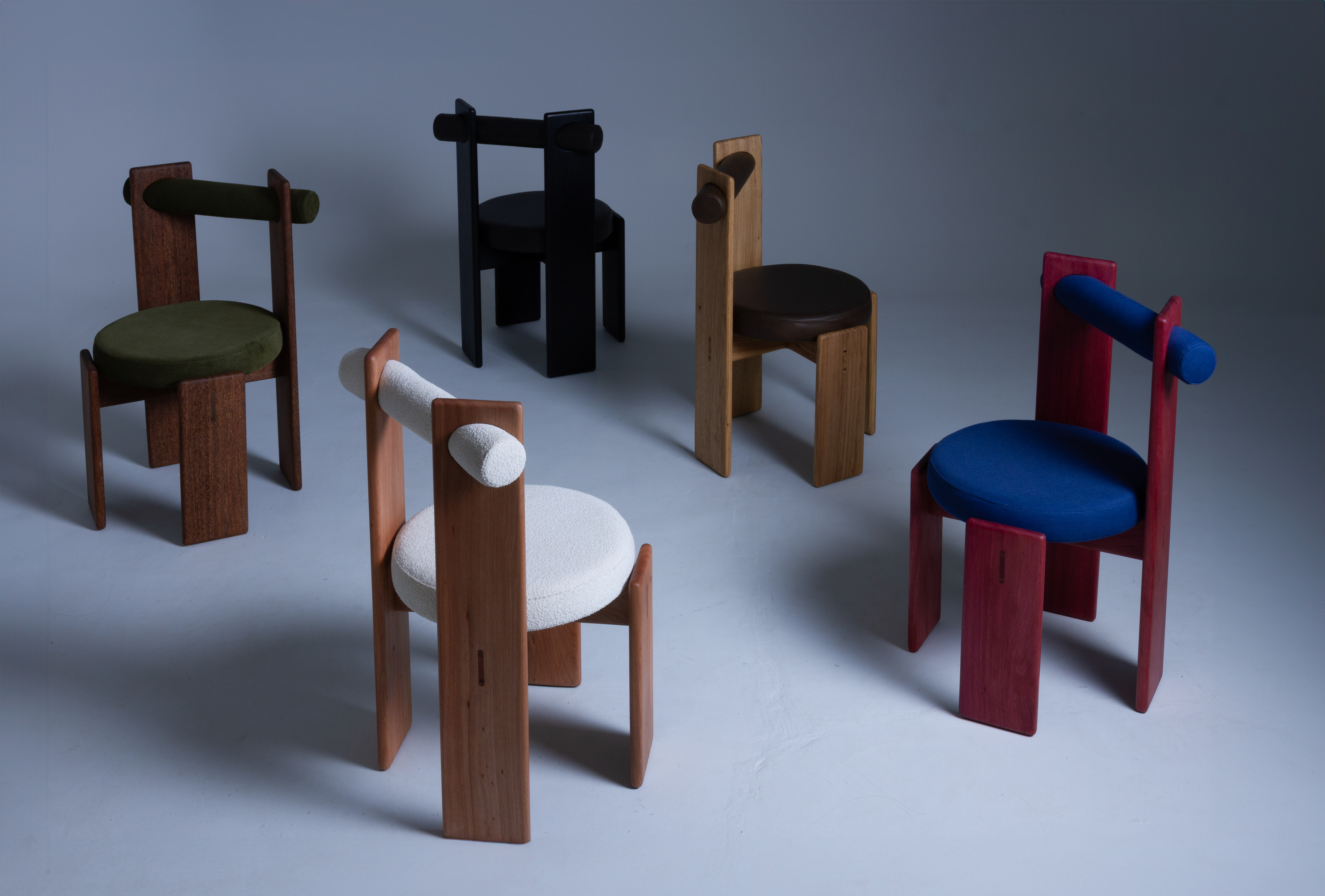 These are the design exhibitions to see in London during Frieze Week
These are the design exhibitions to see in London during Frieze WeekWe round up the best design events happening in London in conjunction with Frieze Week 2025: discover collectible design and craft across the city
-
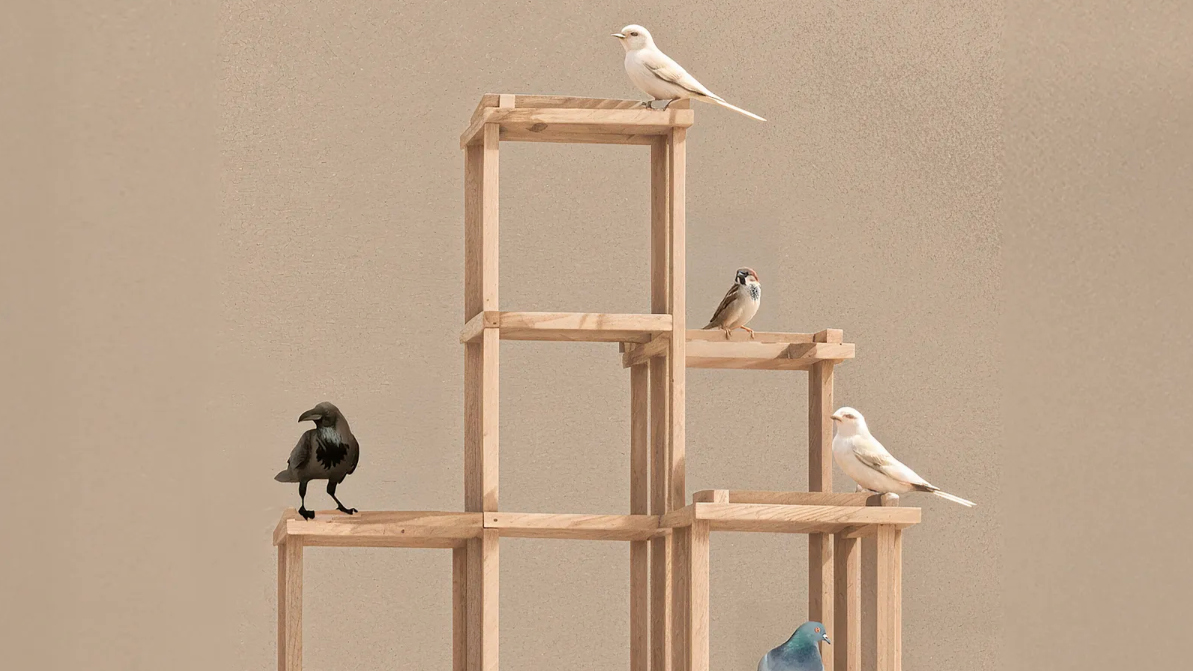 Norman Foster and nine other architects design birdhouses for charity – you can bid
Norman Foster and nine other architects design birdhouses for charity – you can bid‘Architects for the Birds’ is spearheaded by Norman Foster and the Tessa Jowell Foundation to raise funds to improve treatment for brain cancer. Ten architect-designed birdhouses will go up for auction
-
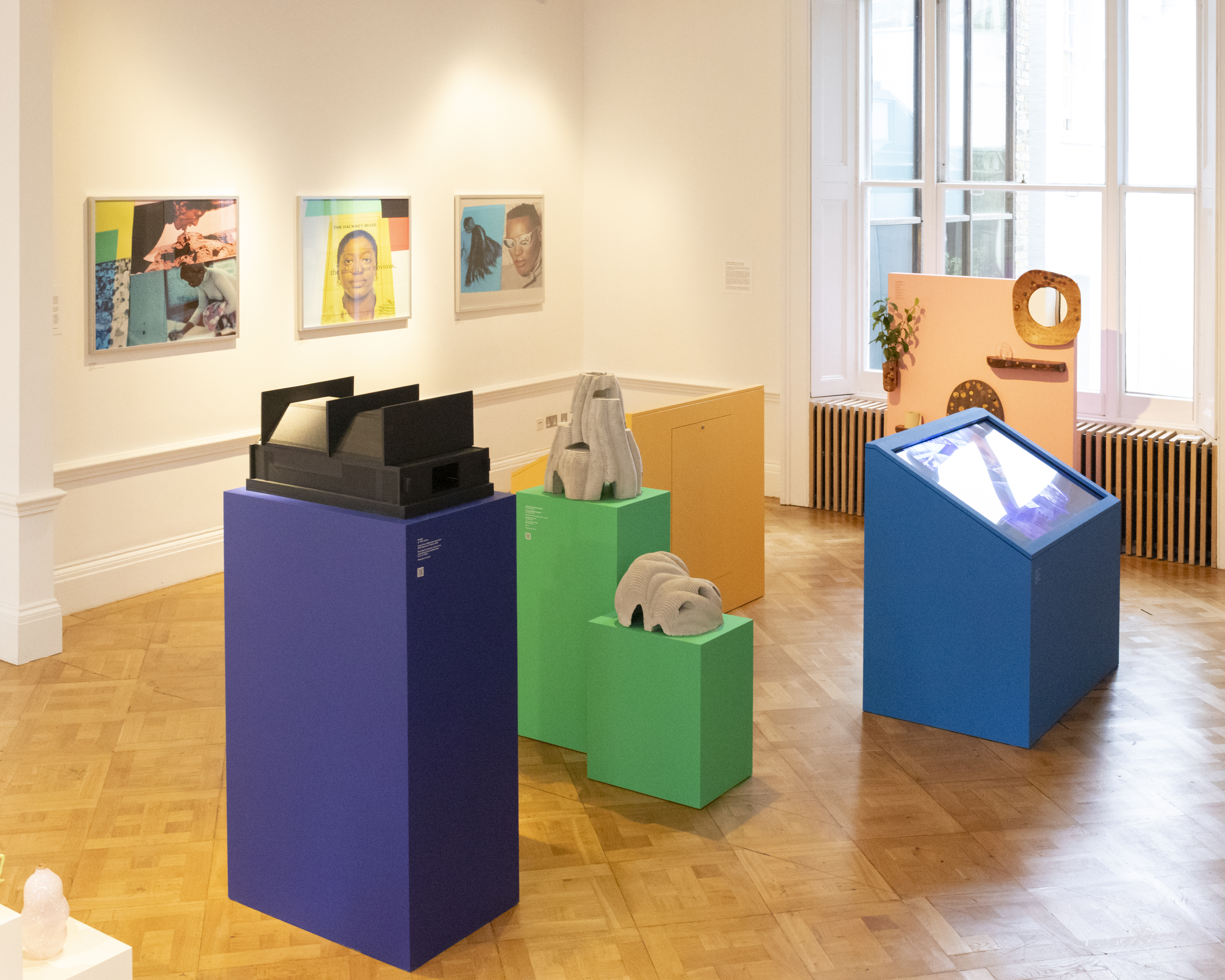 The David Collins Foundation celebrates creativity in all its forms at London Design Festival
The David Collins Foundation celebrates creativity in all its forms at London Design FestivalThe David Collins Foundation presents ‘Convergence’ at the Lavery during London Design Festival 2025 (on view until 19 September), featuring works from the Arts Foundation’s annual Futures Awards
-
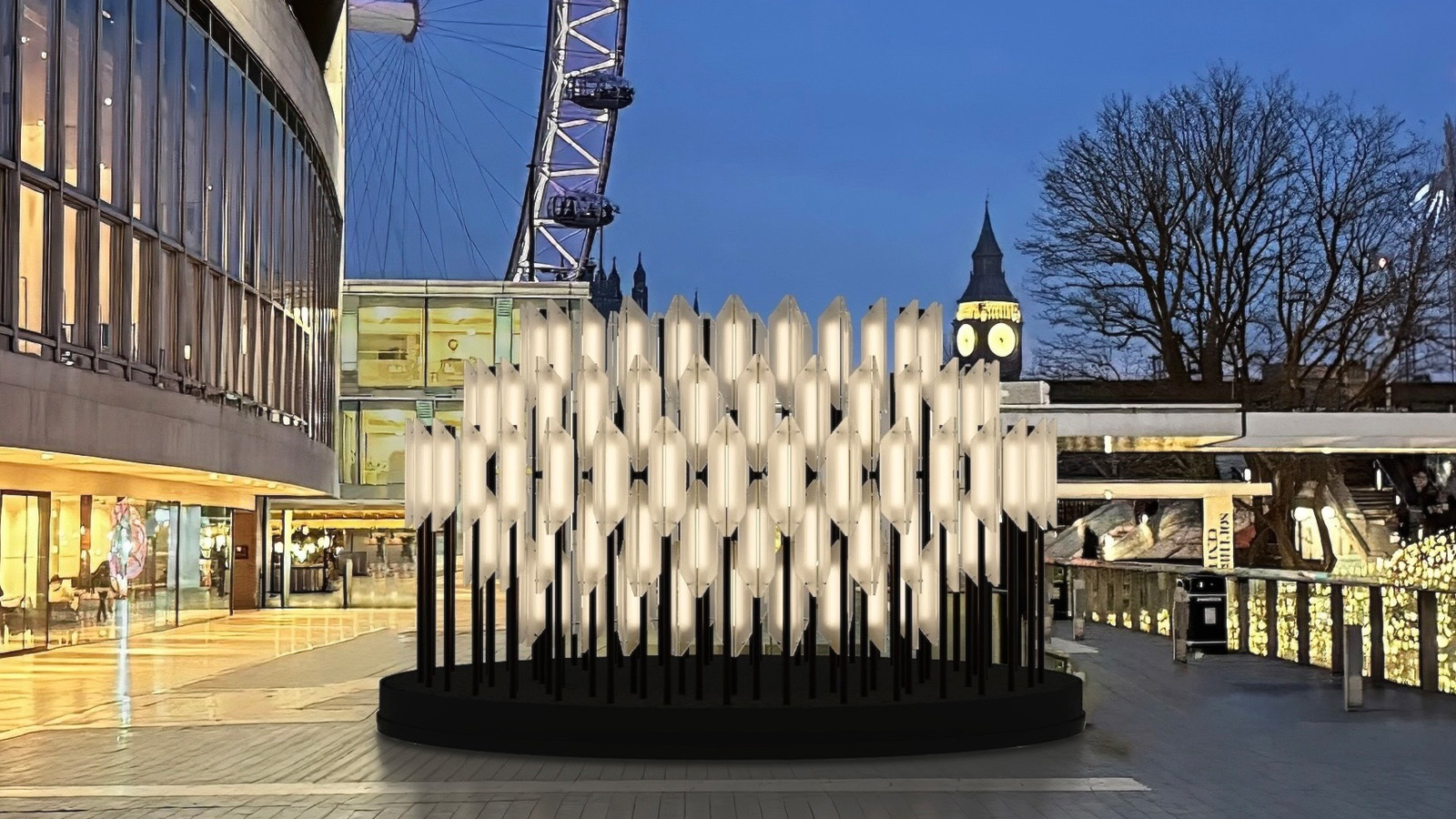 Lee Broom’s brutalist-inspired ‘Beacon’ will light up London as Big Ben strikes the hour
Lee Broom’s brutalist-inspired ‘Beacon’ will light up London as Big Ben strikes the hourSet to pulse through London Design Festival 2025 (13-22 September) and beyond, the British industrial designer’s sculptural light installation on the South Bank draws on its surroundings
-
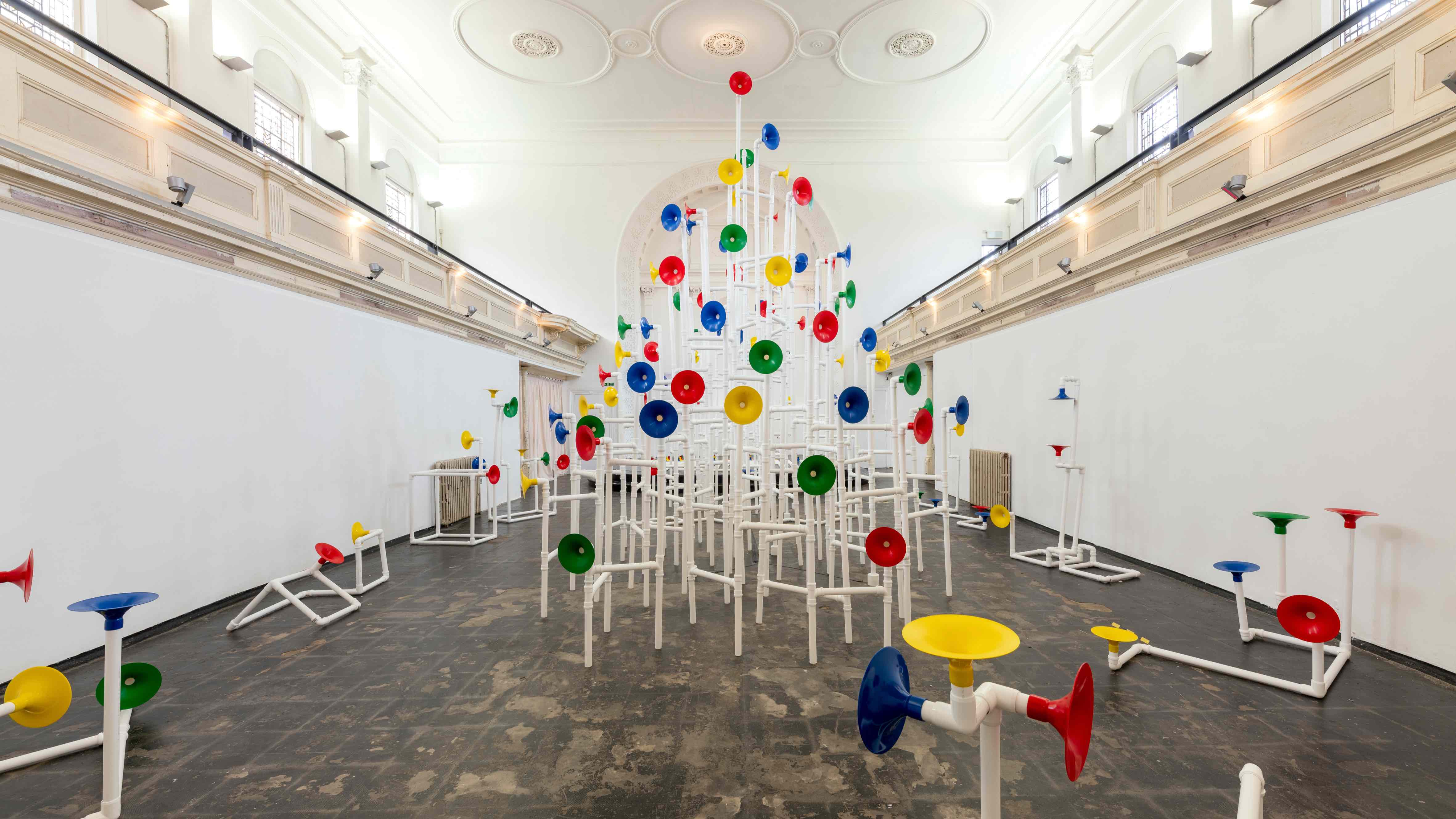 Yuri Suzuki turns sound into architecture at Camden Arts Projects
Yuri Suzuki turns sound into architecture at Camden Arts ProjectsThe sound designer unveils ‘Utooto’, an interactive installation at London’s Camden Arts Projects (until 5 October 2025), in which visitors collaboratively build a sonic piece of architecture
-
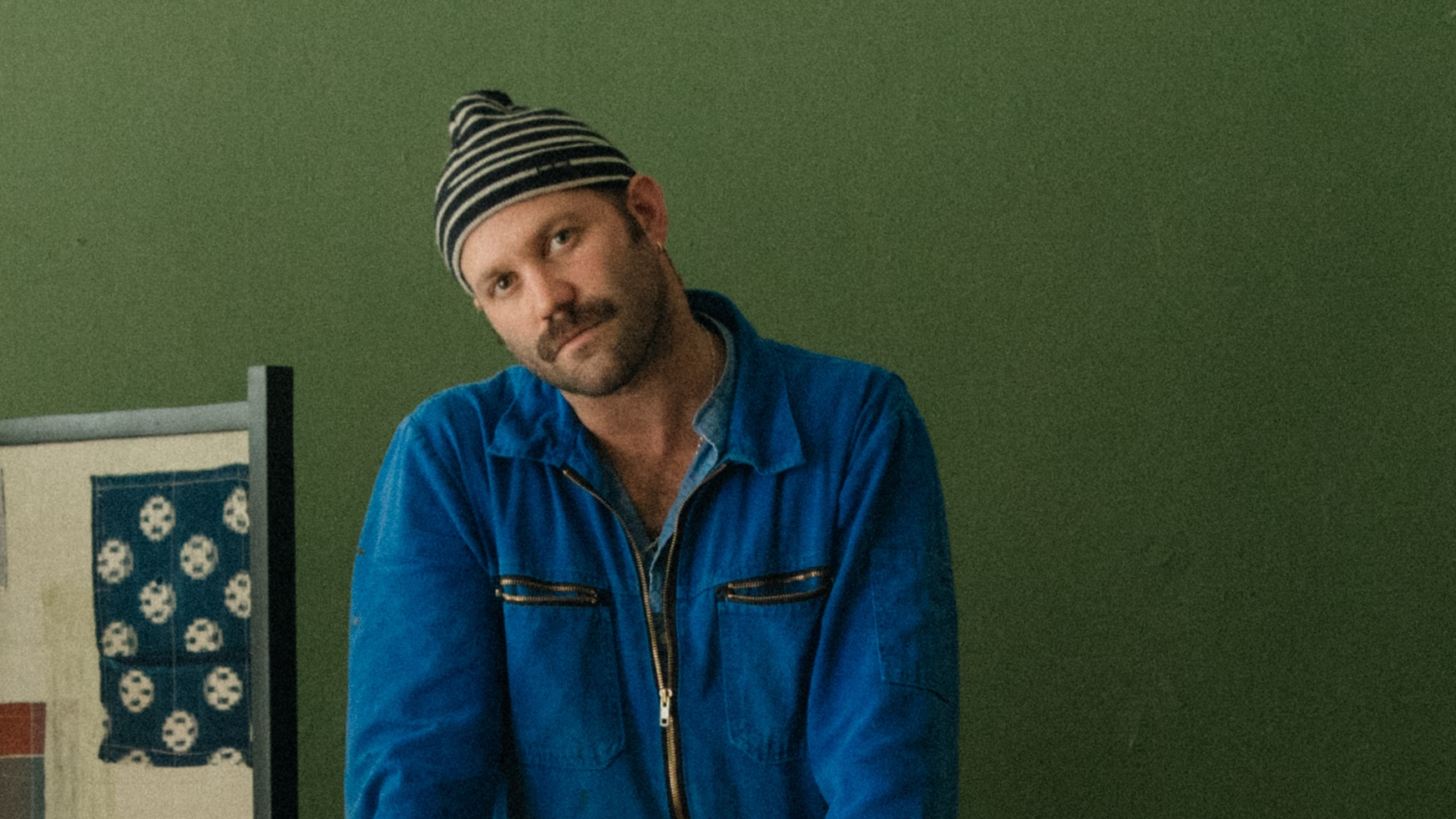 Alex Tieghi-Walker unveils his plans for Brompton Design District 2025
Alex Tieghi-Walker unveils his plans for Brompton Design District 2025Ahead of London Design Festival 2025, we catch up with New York gallerist Alex Tieghi-Walker about his appointment as curator of the Brompton Design District programme